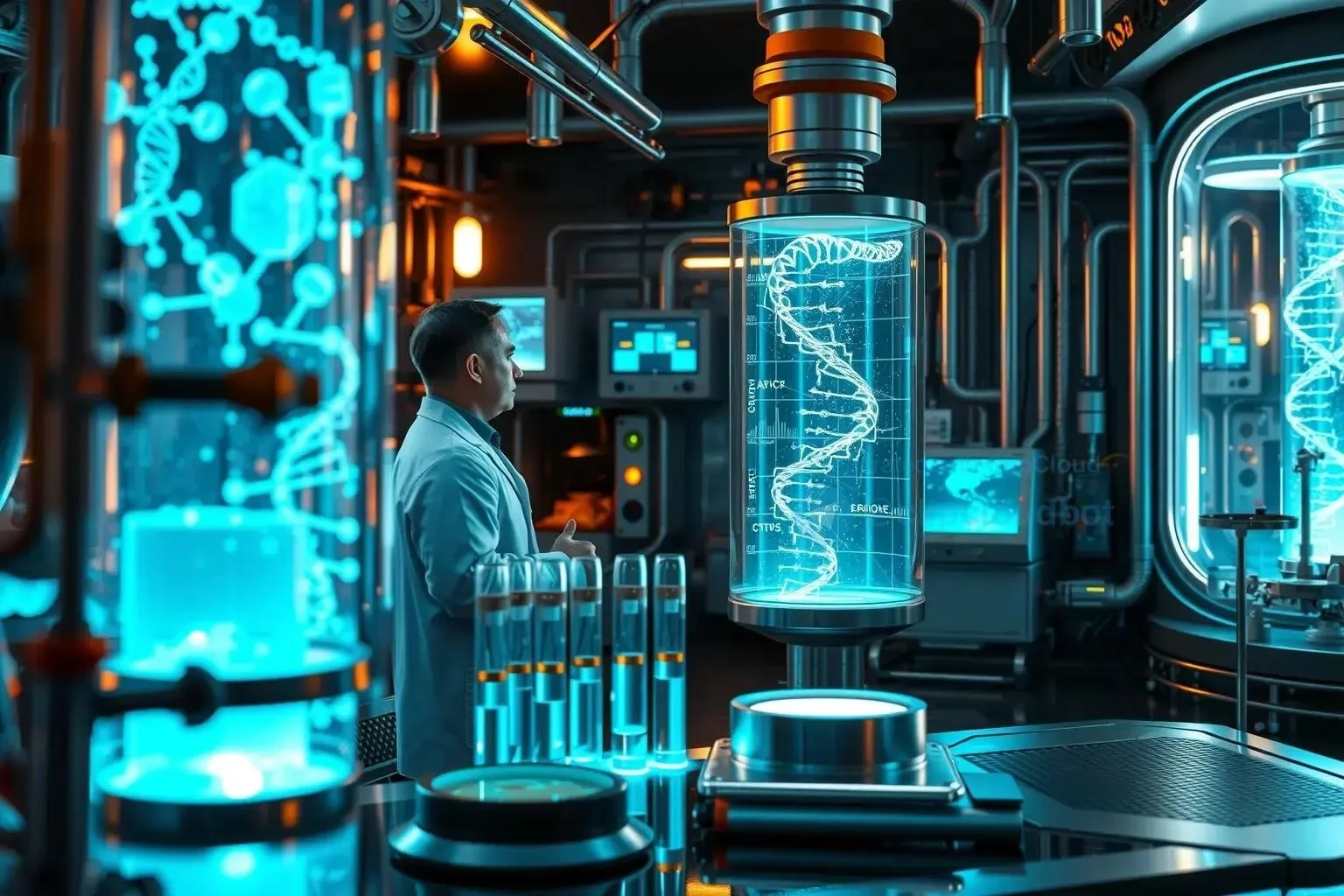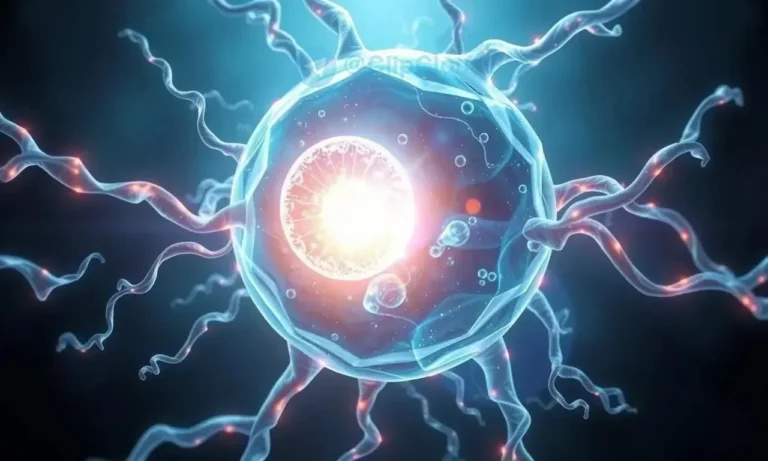Biohacking for Longevity: Optimizing Healthspan and Lifespan
Biohacking for longevity represents a fascinating intersection of biology, technology, and lifestyle choices aimed at optimizing human healthspan and lifespan. It’s a personalized approach, moving beyond conventional wellness paradigms to explore cutting-edge interventions that can potentially slow down aging and enhance vitality. This encompasses a broad spectrum of practices, from dietary modifications and targeted supplementation to leveraging advanced technologies and optimizing physical performance.
The core philosophy of longevity biohacking revolves around taking proactive control of one’s own biology. It emphasizes understanding the intricate workings of the human body at a molecular level and then implementing strategies to improve its function and resilience. This journey often involves self-experimentation and data tracking, empowering individuals to fine-tune their approach based on their unique responses.
Nutrition and Supplement Biohacks
Nutritional biohacking plays a pivotal role in longevity strategies, focusing on optimizing dietary intake to support cellular health, reduce inflammation, and enhance metabolic function. This goes beyond simply eating a balanced diet; it delves into the specific impact of various nutrients on the aging process and tailors food choices accordingly.
Key dietary interventions often explored by longevity biohackers include:
- Time-restricted feeding (TRF): This involves consuming all meals within a specific time window each day, typically 8-10 hours, allowing for an extended fasting period. This can improve metabolic flexibility, cellular repair processes, and potentially increase lifespan.
- Ketogenic diets: High in healthy fats and low in carbohydrates, ketogenic diets shift the body’s primary fuel source from glucose to ketones. This metabolic switch can improve insulin sensitivity, reduce inflammation, and potentially offer neuroprotective benefits.
- Elimination diets: These diets systematically remove potential food allergens or sensitivities, such as gluten, dairy, or soy, to identify and address any underlying inflammatory responses contributing to accelerated aging.
- Caloric restriction with optimal nutrition: Reducing overall caloric intake while maintaining sufficient micronutrient density has been shown to extend lifespan in various animal models and may offer similar benefits in humans.
Supplement biohacking further complements dietary strategies by providing targeted support for specific biological pathways involved in aging:
- NAD+ precursors: Nicotinamide adenine dinucleotide (NAD+) is a crucial coenzyme involved in cellular energy production and DNA repair. Supplementation with precursors like nicotinamide riboside (NR) or nicotinamide mononucleotide (NMN) aims to boost NAD+ levels, potentially mitigating age-related decline.
- Resveratrol: A polyphenol found in grapes and red wine, resveratrol has been shown to activate sirtuins, a family of proteins linked to longevity and stress resistance.
- Spermidine: This polyamine compound is involved in cellular autophagy, a crucial process for removing damaged cellular components and promoting cellular renewal. Spermidine supplementation may enhance autophagy and contribute to healthy aging.
- Antioxidants: Combatting oxidative stress, a major contributor to aging, is a key focus. Antioxidants like vitamin C, vitamin E, and coenzyme Q10 help neutralize free radicals and protect cells from damage.
It’s important to note that while these nutritional and supplement biohacks hold promise, research is ongoing, and individual responses can vary. Consulting with a healthcare professional or registered dietitian is crucial before implementing any significant dietary changes or supplement regimens, especially if you have pre-existing health conditions. A personalized approach, based on individual needs and goals, is essential for maximizing the potential benefits and minimizing any risks;
Technology-Driven Longevity Interventions
Technology plays an increasingly prominent role in the pursuit of longevity, offering innovative tools and interventions to monitor, analyze, and optimize various aspects of human biology. These technologies empower individuals to take a data-driven approach to their health and explore cutting-edge methods for extending lifespan and healthspan.
Key areas where technology is driving advancements in longevity include:
- Wearable sensors and trackers: Smartwatches, fitness trackers, and other wearable devices continuously monitor vital signs, sleep patterns, activity levels, and even blood glucose levels. This real-time data provides valuable insights into individual health and allows for personalized adjustments to lifestyle and interventions.
- Genetic testing and analysis: Analyzing an individual’s genetic makeup can reveal predispositions to certain age-related diseases and provide insights into potential responses to various interventions. This personalized information allows for proactive preventative measures and targeted therapies.
- Artificial intelligence (AI) and machine learning: AI algorithms are being utilized to analyze vast datasets of biological information, identifying patterns and correlations that can lead to new insights into the aging process. AI-powered platforms can also personalize recommendations for lifestyle changes, supplements, and other interventions based on individual data.
- Regenerative medicine: This field focuses on repairing or replacing damaged tissues and organs, offering the potential to reverse some of the detrimental effects of aging. Stem cell therapy, gene editing technologies like CRISPR, and tissue engineering are showing promise in addressing age-related decline.
- Cryotherapy: Exposing the body to extremely cold temperatures for short periods has been shown to reduce inflammation, improve recovery, and potentially stimulate cellular repair mechanisms. Whole-body cryotherapy and localized cryotherapy are gaining popularity as potential longevity-enhancing interventions.
- Neurofeedback and brain stimulation: These techniques aim to optimize brain function and cognitive performance, which can decline with age. Neurofeedback trains individuals to regulate their brainwave activity, while brain stimulation techniques like transcranial magnetic stimulation (TMS) can modulate neuronal activity and potentially improve cognitive function.
- Advanced diagnostics and imaging: Sophisticated imaging technologies, such as MRI, PET scans, and advanced blood tests, provide detailed insights into the body’s internal workings, allowing for early detection of age-related changes and diseases. This early detection enables timely interventions and preventative measures.
The rapid pace of technological advancement continues to reshape the landscape of longevity research and interventions. While many of these technologies are still in their early stages of development, they hold immense potential for extending human lifespan and healthspan. As these technologies mature and become more accessible, they are likely to play an increasingly integral role in personalized longevity strategies.
Exercise and Physical Biohacking
Exercise and physical biohacking go beyond traditional fitness regimens, focusing on optimizing physical performance and resilience to promote longevity. This involves strategically implementing various exercise modalities and incorporating targeted interventions to enhance cellular health, improve mitochondrial function, and mitigate the age-related decline in physical capacity.
Key aspects of exercise and physical biohacking for longevity include:
- High-Intensity Interval Training (HIIT): Short bursts of intense exercise interspersed with brief recovery periods have been shown to be highly effective in improving cardiovascular health, boosting metabolism, and stimulating mitochondrial biogenesis, the creation of new mitochondria. This can enhance cellular energy production and combat age-related decline.
- Strength Training: Maintaining muscle mass and strength is crucial for overall health and longevity. Strength training helps prevent age-related muscle loss (sarcopenia), improves bone density, and enhances metabolic function.
- Flexibility and Mobility Work: Maintaining flexibility and range of motion is essential for functional independence and preventing injuries as we age. Yoga, Pilates, and regular stretching can improve joint health, reduce pain, and enhance overall physical function.
- Cold Exposure Therapy: Brief exposure to cold temperatures, such as cold showers or cryotherapy, can activate beneficial physiological responses, including improved circulation, reduced inflammation, and enhanced cellular resilience.
- Heat Therapy (Saunas): Regular sauna use has been linked to various health benefits, including improved cardiovascular health, reduced stress, and enhanced cellular repair mechanisms. The heat stress response induced by sauna use can promote longevity.
- Red Light Therapy: Exposure to red and near-infrared light has been shown to stimulate mitochondrial function, reduce inflammation, and promote tissue repair. This therapy is being explored for its potential benefits in enhancing cellular health and mitigating age-related decline.
- Hyperbaric Oxygen Therapy (HBOT): Breathing pure oxygen in a pressurized chamber can increase oxygen delivery to tissues, promoting healing and potentially enhancing cellular regeneration. HBOT is being investigated for its potential role in addressing age-related decline and improving cognitive function.
- Sleep Optimization: Adequate sleep is crucial for cellular repair, hormone regulation, and overall health. Prioritizing sleep hygiene and implementing strategies to improve sleep quality are essential components of physical biohacking for longevity.
By strategically incorporating these various exercise modalities and physical biohacking interventions, individuals can optimize their physical performance, enhance cellular health, and mitigate the age-related decline in physical capacity. This proactive approach to physical well-being plays a vital role in promoting longevity and maintaining a high quality of life throughout the aging process.
Ethical Considerations in Biohacking
As biohacking for longevity gains traction, it raises important ethical considerations that warrant careful examination. While the pursuit of extended lifespan and enhanced healthspan offers exciting possibilities, it’s crucial to navigate the ethical complexities associated with these emerging technologies and practices.
Key ethical concerns related to biohacking include:
- Accessibility and Equity: Many cutting-edge longevity interventions, such as gene editing technologies and regenerative therapies, are expensive and may not be accessible to everyone. This raises concerns about potential health disparities and the creation of a “two-tiered” system where only the wealthy can access life-extending treatments.
- Safety and Regulation: The long-term effects of many biohacking practices and technologies are still unknown. The lack of robust regulation and oversight in some areas raises concerns about potential risks and the need for rigorous scientific research to ensure safety and efficacy.
- Informed Consent and Autonomy: Individuals engaging in biohacking should be fully informed about the potential benefits and risks involved. Ensuring informed consent and respecting individual autonomy in making decisions about their own bodies is crucial.
- Defining “Normal” Aging: Biohacking interventions aim to alter the trajectory of aging, raising questions about what constitutes “normal” aging and whether attempting to extend lifespan beyond what is currently considered typical is ethically justifiable.
- Societal Impact of Increased Lifespan: If biohacking successfully extends human lifespan significantly, it could have profound societal implications, including impacts on resource allocation, healthcare systems, and social structures. Careful consideration of these potential consequences is necessary.
- Germline Editing and Future Generations: Gene editing technologies raise the possibility of altering the human germline, meaning that changes would be passed down to future generations; This raises complex ethical questions about the potential for unintended consequences and the implications for human evolution.
- Enhancement vs. Therapy: Biohacking interventions can be categorized as either therapeutic, aimed at treating disease, or enhancement, aimed at improving beyond normal human capabilities. The ethical implications of enhancement technologies, such as cognitive enhancement or physical augmentation, require careful scrutiny;
- Data Privacy and Security: Biohacking often involves collecting and analyzing large amounts of personal health data. Protecting the privacy and security of this data is essential to prevent misuse and discrimination.
Open and transparent discussions about these ethical considerations are crucial for shaping responsible development and implementation of biohacking technologies. Balancing the potential benefits of longevity interventions with the ethical implications is essential to ensure a future where these advancements contribute to human well-being in an equitable and sustainable manner.






